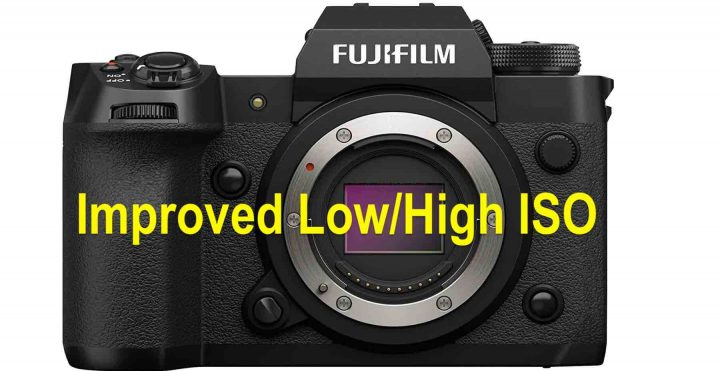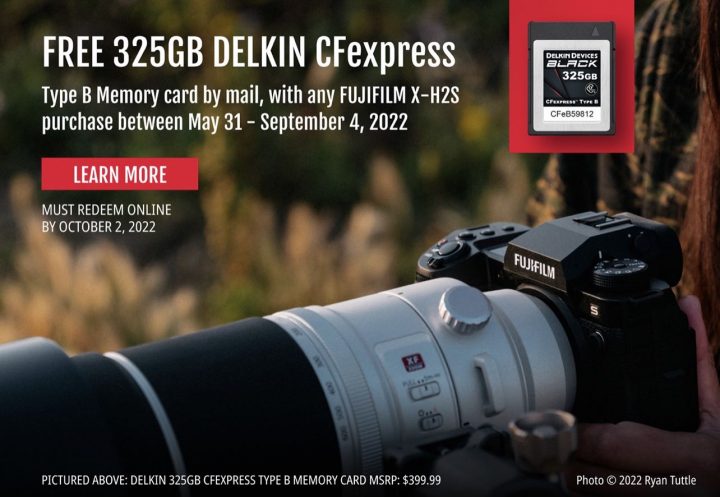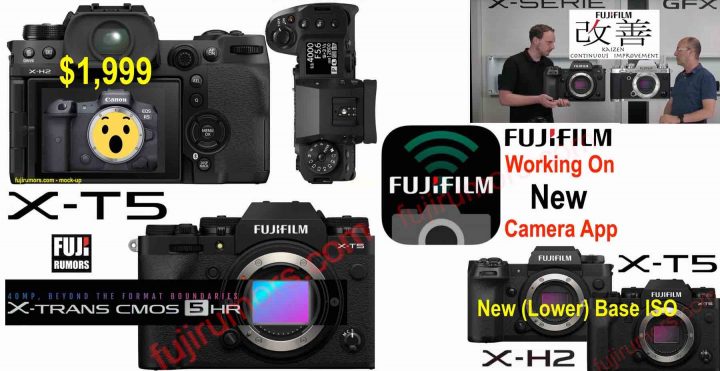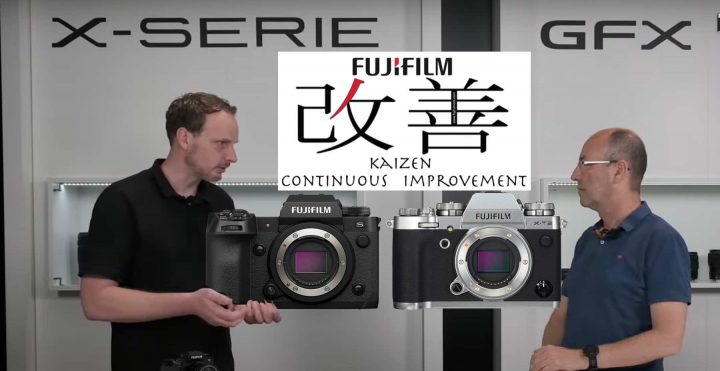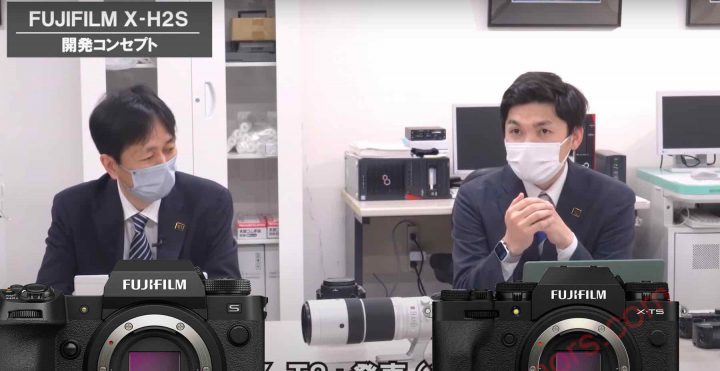Important Note Added by Fujifilm Regarding XF Lenses Supporting 40MP Sensor on X-H2 (and Fujifilm X-T5)
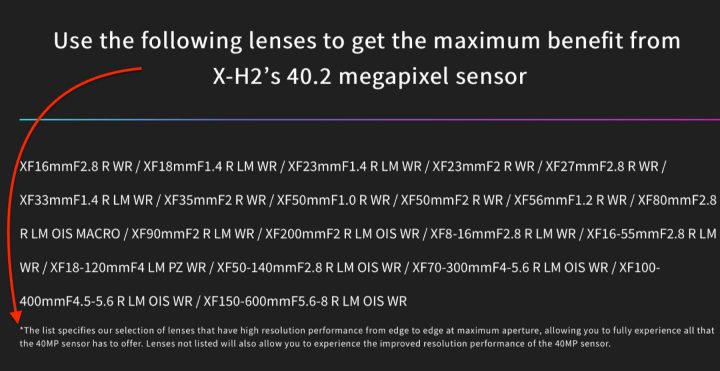
- Fujifilm X-H2: BHphoto / AmazonUS / Adorama / Moment / Focuscamera
When Fujifilm launched the 40MP Fujifilm X-H2, they also published a list of lenses that get the maximum benefit from the new high resolution sensor.
This led quite some folks (also here on FujiRumors) to believe that the lenses not on the list will not profit at all from the increased resolution.
Some even said that because of this, they won’t upgrade to the 40MP Fujifilm X-H2 (and also the upcoming 40MP Fujifilm X-T5)
I did try to explain that you have to see in other terms: the new sensor will finally let all XF lenses express at their best in terms of resolution. it’s just those not on the list won’t go quite up all the way to 40MP.
Finally Fujifilm understood that the message they put out was potentially confusing and now added a note on their official Fujifilm X-H2 page:
*The list specifies our selection of lenses that have high resolution performance from edge to edge at maximum aperture, allowing you to fully experience all that the 40MP sensor has to offer. Lenses not listed will also allow you to experience the improved resolution performance of the 40MP sensor.”
So if you want 40MP resolution from edge to edge at maximum aperture, then only the lenses on the list will deliver (see list below). But Fujifilm now clearly says that lenses not listed will also deliver improved resolution performance when used on the 40MP sensor.
Hence, if you want more resolution, buying a Fujifilm X-H2 or the Fujifilm X-T5 will give you that also by using lenses that are not on the list.
And from how I read it, some might even resolve all the 40MP when stopped down at least in the center of the frame. Would be nice if Fujifilm would be even more specific on that.
- Fujifilm X-H2: BHphoto / AmazonUS / Adorama / Moment / Focuscamera
- Fujifilm X-H2S: BHphoto / AmazonUS / Adorama / Moment
- XF 56mm f/1.2 R WR: BHphoto / AmazonUS / Adorama / Moment / Focuscamera
- GF 20-35mm f/4: BHphoto / AmazonUS / Adorama / Moment / Focuscamera
List of Lenses with 40MP resolving power edge to edge wide open:
- XF16mmF2.8 R WR
- XF18mmF1.4 R LM WR
- XF23mmF1.4 R LM WR
- XF23mmF2 R WR
- XF27mmF2.8 R WR
- XF33mmF1.4 R LM WR
- XF35mmF2 R WR
- XF50mmF1.0 R WR
- XF50mmF2 R WR
- XF56mmF1.2 R WR
- XF80mmF2.8 R LM OIS MACRO
- XF90mmF2 R LM WR
- XF200mmF2 R LM OIS WR
- XF8-16mmF2.8 R LM WR
- XF16-55mmF2.8 R LM WR
- XF18-120mmF4 LM PZ WR
- XF50-140mmF2.8 R LM OIS WR
- XF70-300mmF4-5.6 R LM OIS WR
- XF100-400mmF4.5-5.6 R LM OIS WR
- XF150-600mmF5.6-8 R LM OIS WR
Follow FujiRumors on Facebook, Instagram, RSS-feed, Youtube, Flipboard and Twitter.
100% Fuji Colors Power
Rumors and Discussions


